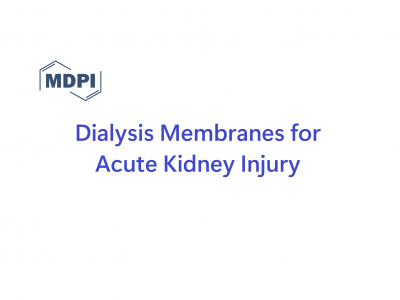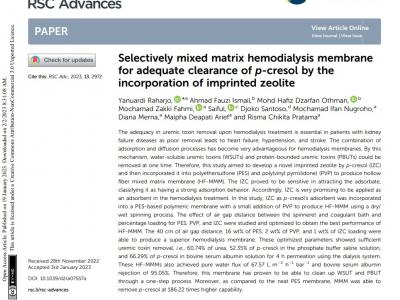Dialysis Membranes for Acute Kidney Injury
- Artikel Ilmiah
- /
- 15/03/2022
- /
- 0

Abstract
Mortality and morbidity rates among critically ill septic patients having acute kidney injury (AKI) are very high, considering the total number of deaths after their admission. Inappropriate selection of the type of continuous renal replacement therapy and inadequate therapy become the immediate causes of these issues. Dialysis is a commonly used treatment intended to prolong the life of AKI patients. Dialysis membranes, which are the core of dialysis treatment, must be properly selected to ensure fair treatment to the patients. The accumulation of certain types of molecules must be dealt with using the right membrane. Whether it is low-flux, high-flux, or adsorptive type, the dialysis membrane should be chosen depending on the condition of the patients. The selection of dialysis membranes should also be based on their effect on the treatment outcomes and well-being. All these options are needed to serve the patients of different clinical settings. The use of dialysis membranes is not restricted to conventional haemodialysis, but rather they can be employed in haemoperfusion, haemofiltration, haemodiafiltration, or a combination of any two of them.This review focuses in-depth on different types of dialysis membranes, their characteristics, and approaches in addressing the issues encountered in patients having AKI with sepsis and/or multiorgan failure in intensive care units.
Keywords: acute kidney injury; haemodialysis membrane; mixed matrix membrane; haemoperfusion; adsorption
Introduction
Membrane technology is growing rapidly. At the beginning of the use of this technology, membranes were widely applied to support the development of science and technology in theoretical physics and chemistry, rather than for commercial use. Due to various technological benefits, researchers began developing membrane applications for human survival. One of the applications is for kidney disease treatment, namely haemodialysis (HD) through a principle of dialysis, whereby the membrane acts as an artificial kidney. Haemodialysis is not intended to heal the patient but to prolong the life of the patient in acute and chronic conditions. Acute kidney injury (AKI) and acute-on-chronic kidney failure (ACKF) are conditions when the patients experience a sudden negative change in blood quality caused by the accumulation of toxins.
Source: https://www.mdpi.com/2077-0375/12/3/325
Keywords:




